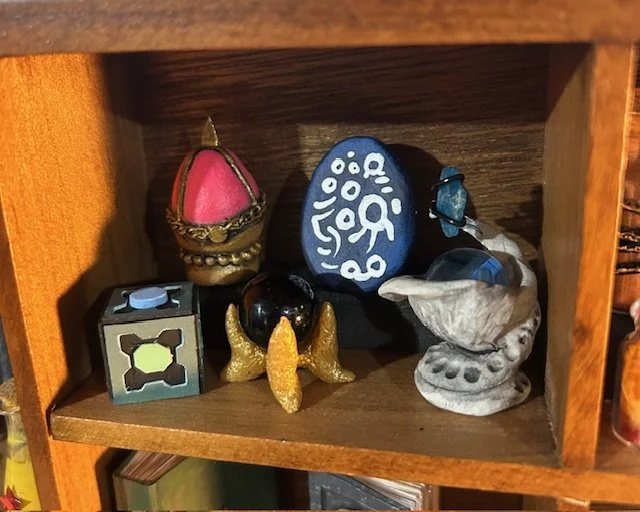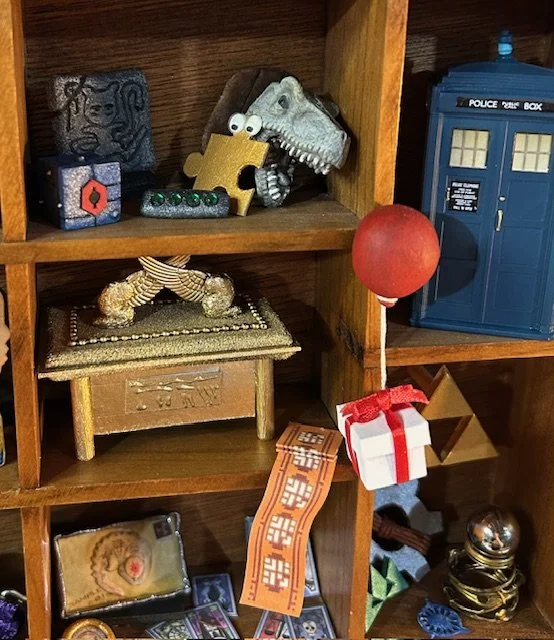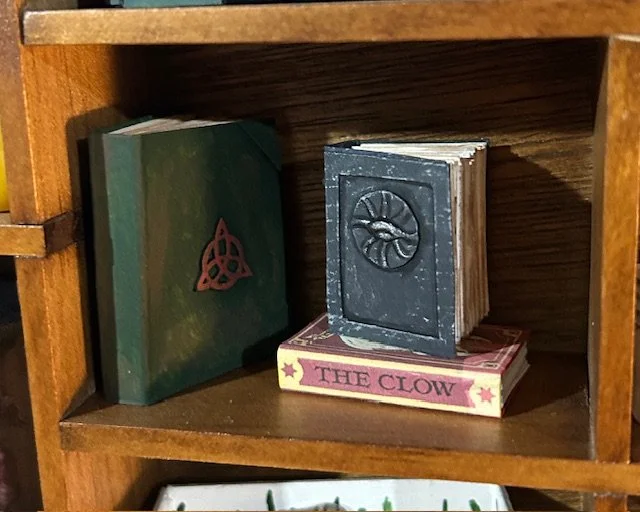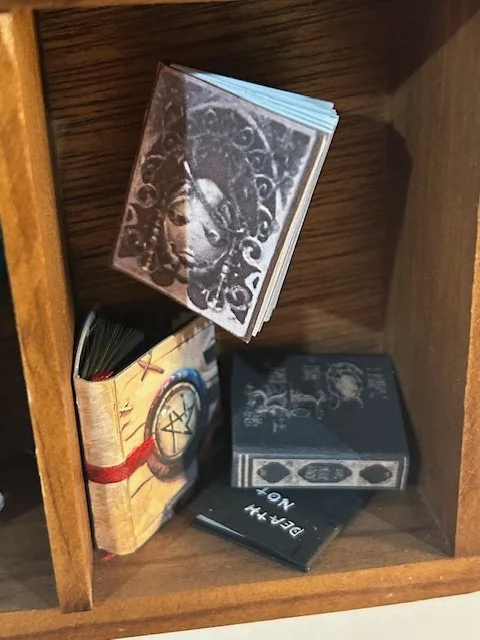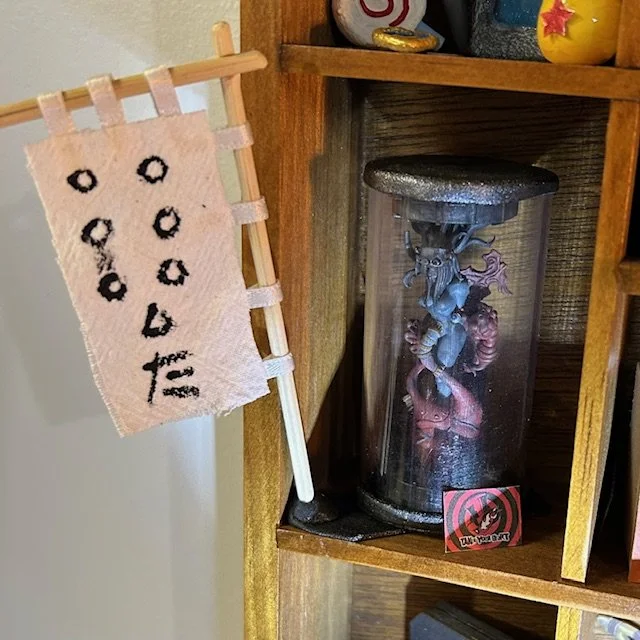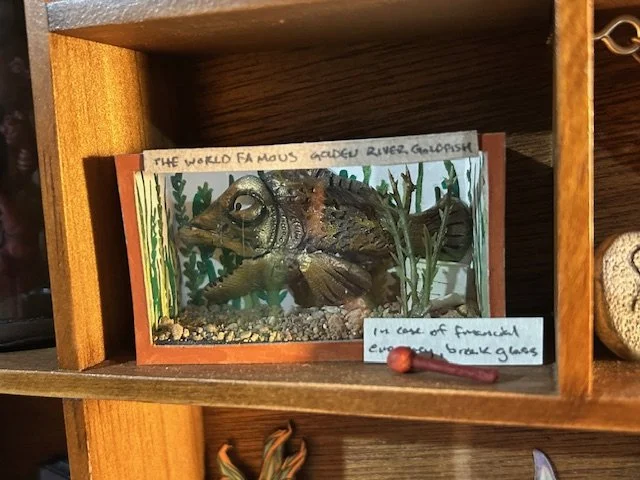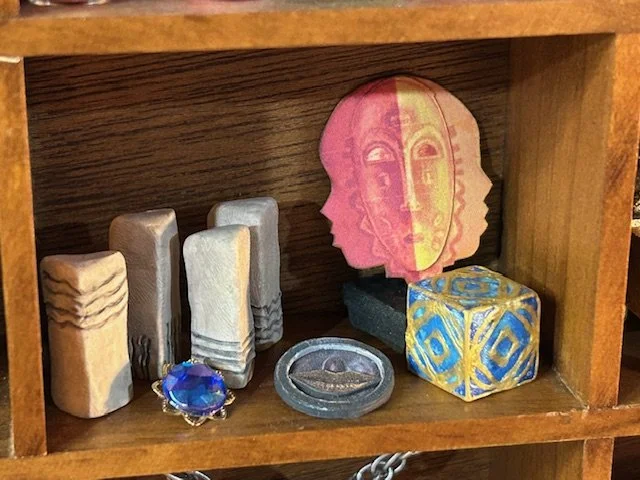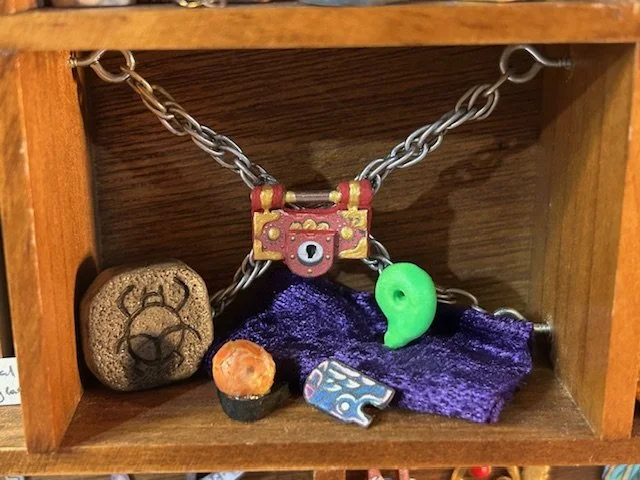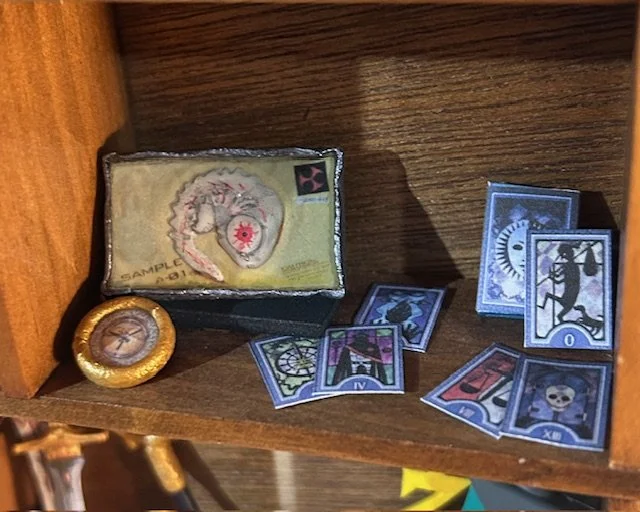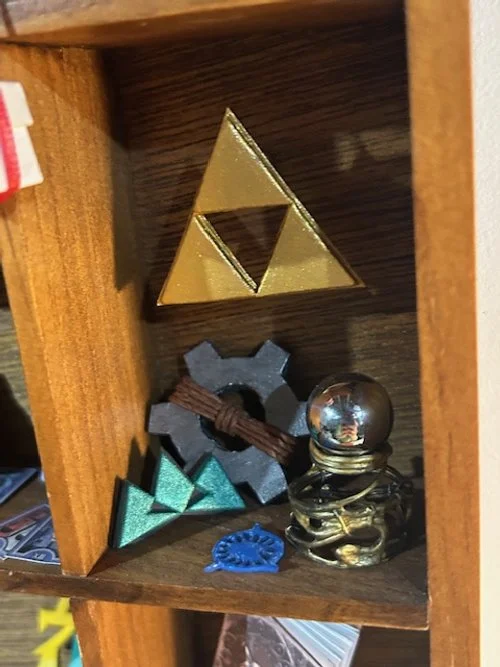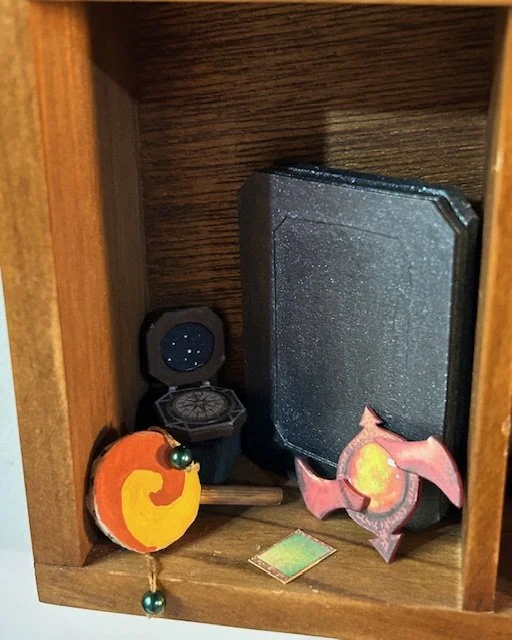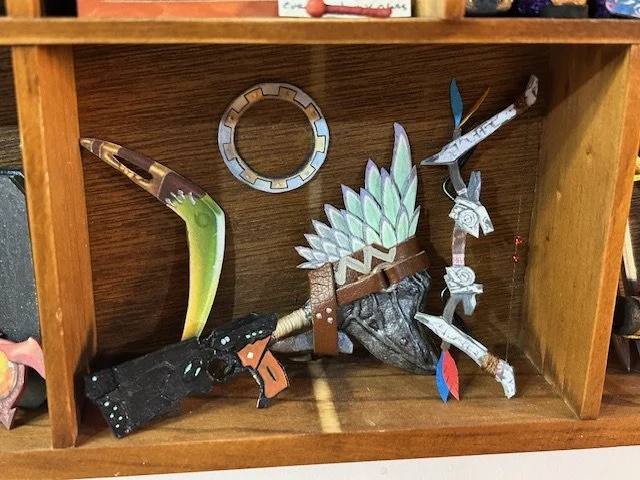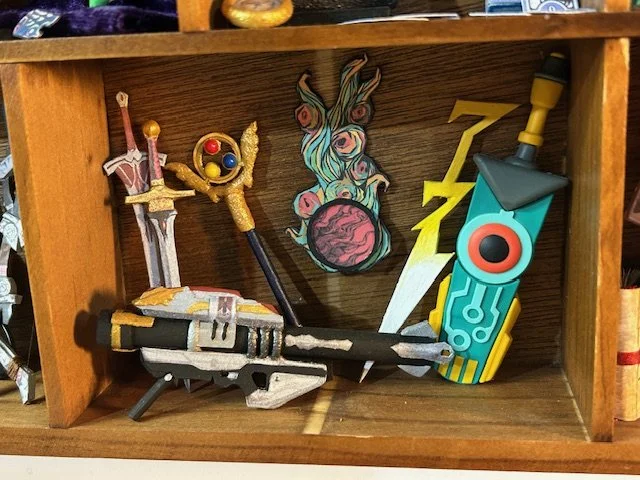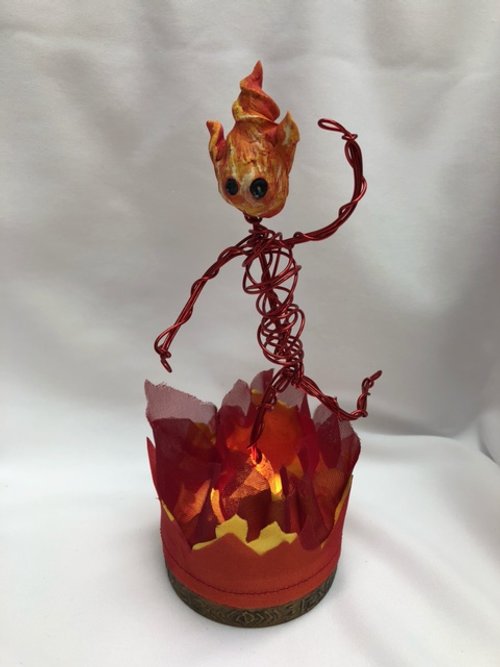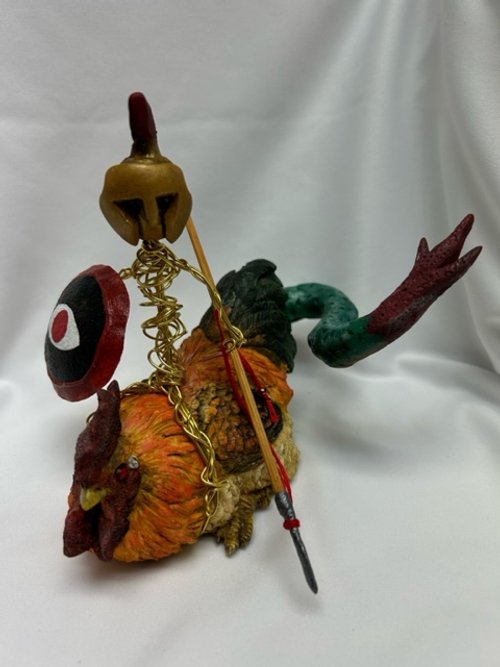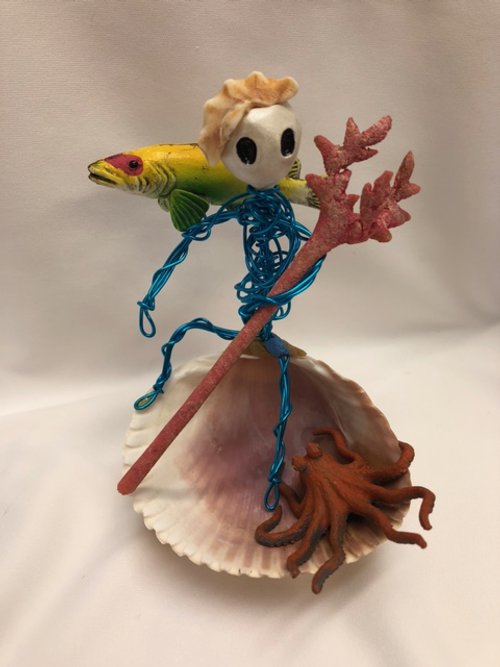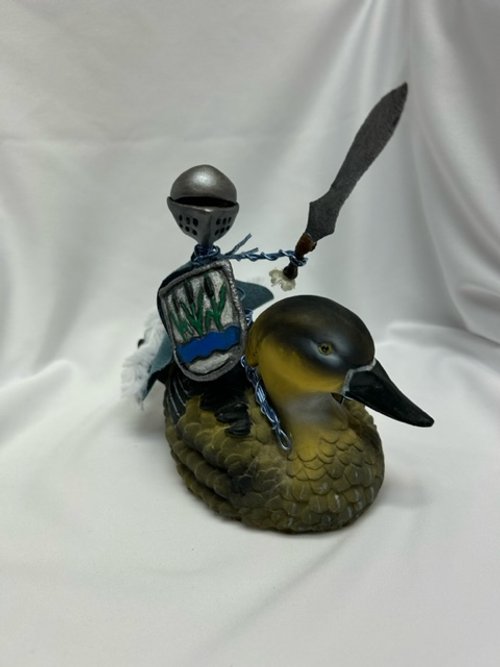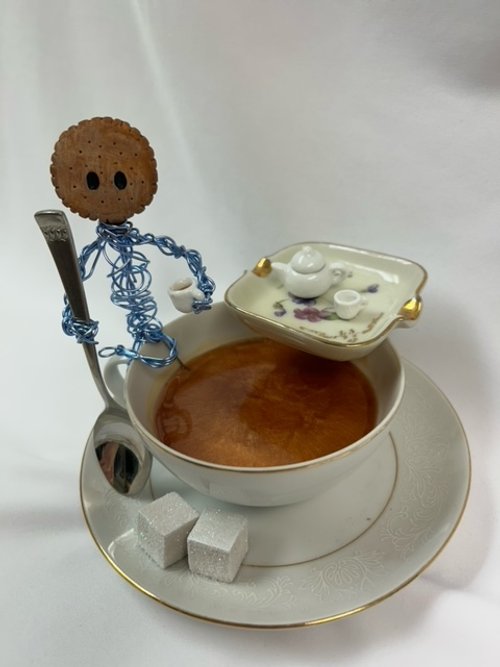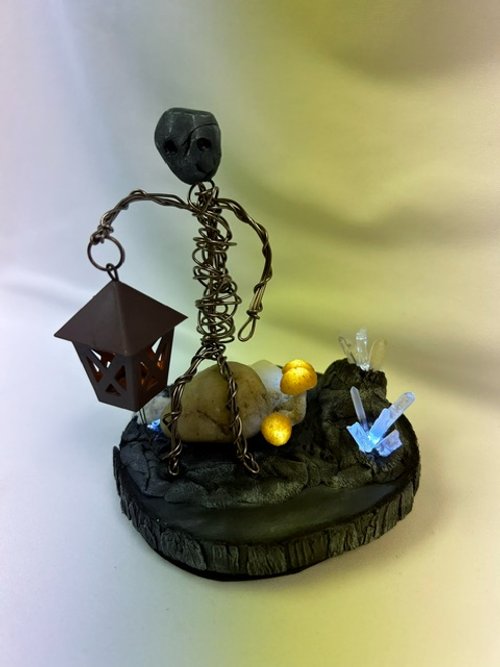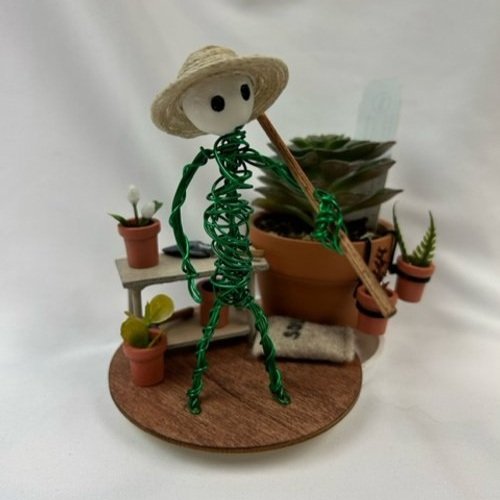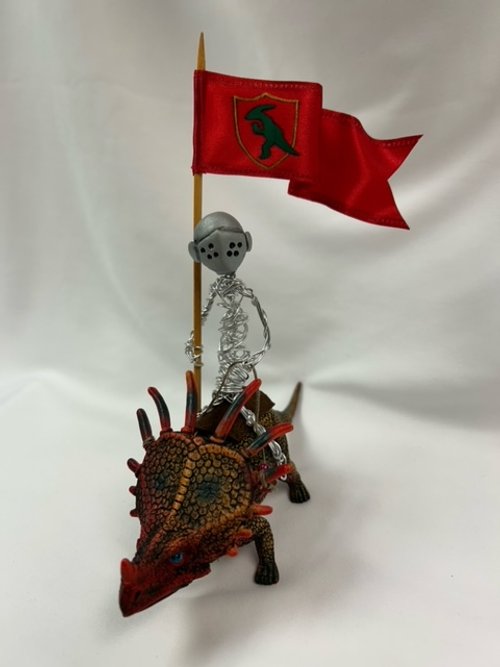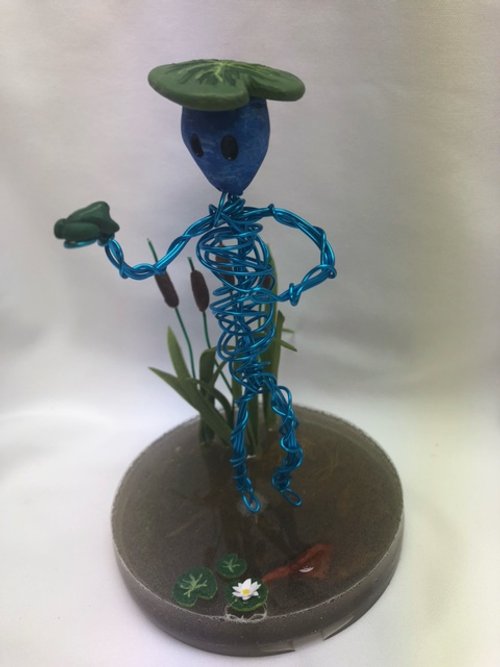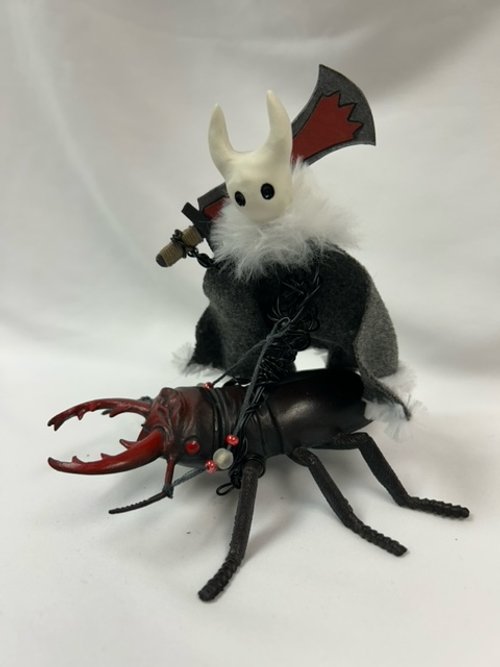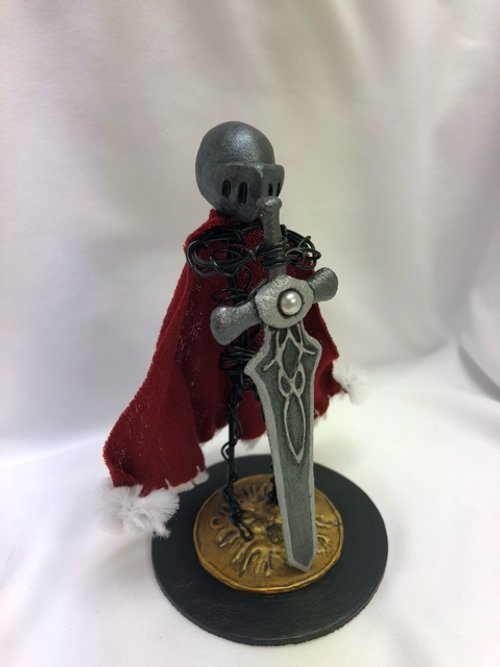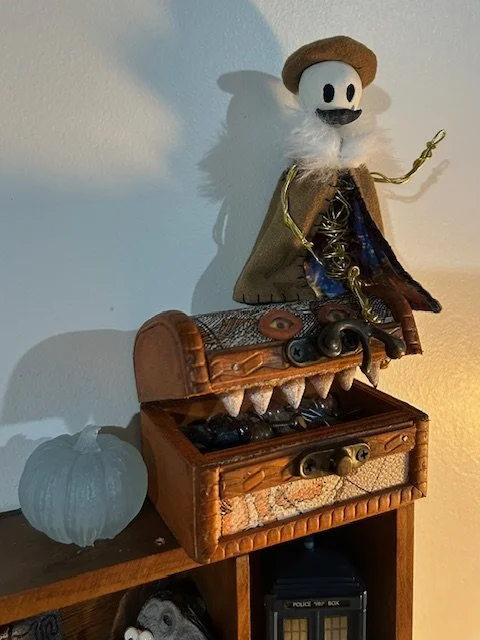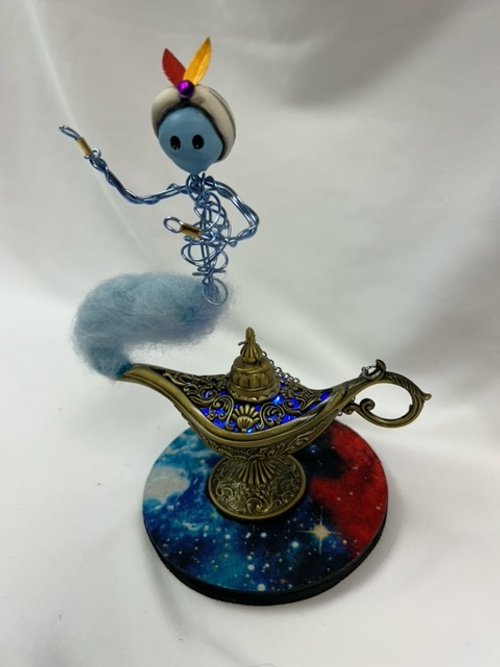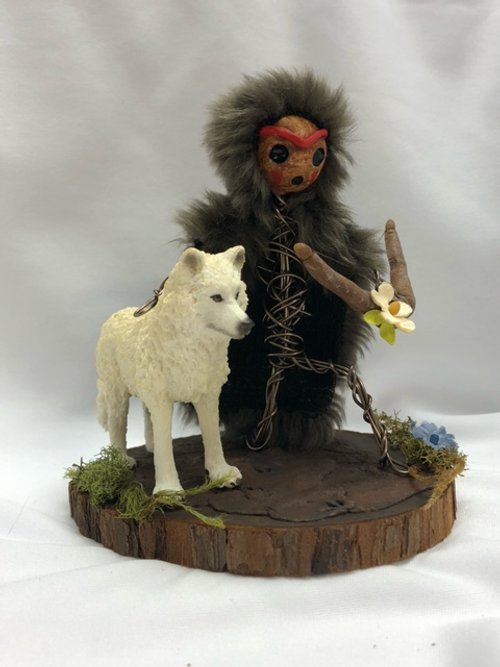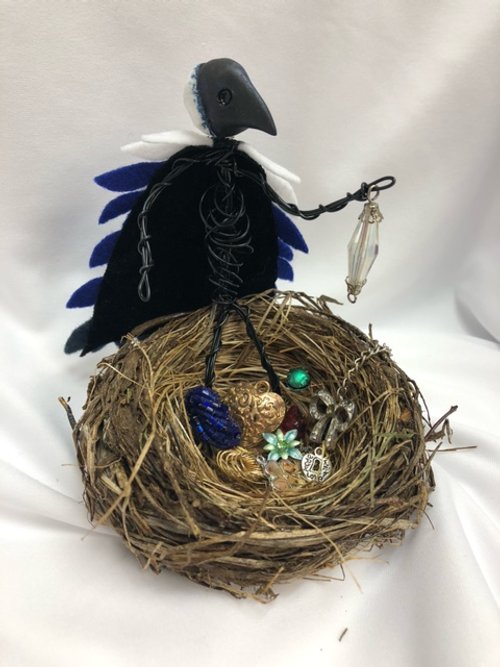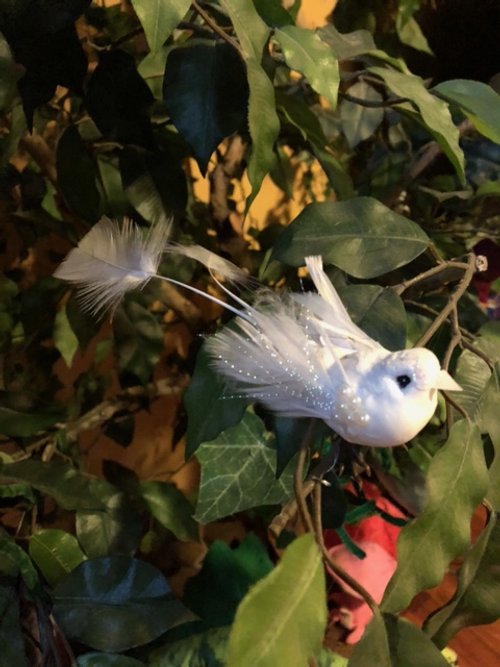Peregrine's Paraphernalia
Michael MacWolff
Our charming, dimension-hopping, magical-artifact-replicating scintillavum has an extensive collection of treasures he’s created from his adventures to far-flung places.
Super Star [Mushroom Kingdom - Super Mario Bros.] When touched, causes folk to flash in rainbow colors and become invulnerable for a short period
Eluvian [Thedas - Dragon Age] When activated, it allows folk to communicate or travel across great distances.
Cane of Byrna [Hyrule - The Legend of Zelda] Channeling magic through this staff creates an impenetrable force field around the wielder
Invincible Candy [Pop Star - Kirby] Eating this candy causes you to sparkle and become invulnerable for a short period
Banana Juice [Donkey Kong Country] Drinking this juice causes you to turn gold and become invulnerable for a short period
Phase Locket [Shovel Knight] Allows its wielder to phase through solid pbjects
Meeseeks Box [Dimension C137 - Rick & Morty] Pressing the button creates a Meeseeks, a blue creature whose existence is predicated on helping you complete one specific objective.
Soul Gem [Puella Magi Madoka Magica] This gem functions as a phylactery for a person’s soul, which also grants them magical abilities based on the qualities of said soul.
Black Orb [Lemuria - Golden Sun] This is the control mechanism for a special type of airship. Requires the use of psyenergy to activate.
Wanderer’s Journal [Hallownest - Hollow Knight] This journal contains the writings of a traveller from a long-dead kingdom.
Crystal Chalice [Final Fantasy: Crystal Chronicles] This vessel is designed to hold a special magical substance called myrrh, whose magic is used to empower protective crystals. A small shard of the crystal is embedded in the chalice to protect travellers whose job it is to harvest this myrrh.
Phoenix Down [Final Fantasy] Down feathers from the mythical phoenix; these items contain some of the healing magic of the creatures and can be used to heal someone on the brink of death.
Spice Melange [Arrakis - Dune] A drug that sharply heightens awareness across a wide spectrum.
Cuzco’s Poison? [Inca Empire - The Emperor’s New Groove] Poison chosen specifically to kill Cuzco… but is actually just essence of llama
Potion [Kanto - Pokemon] A spray with powerful regenerative properties
Niga-Dango [Yubaba’s Bath House - Spirited Away] A bitter dumpling with powerful magical properties that can counteract curses when ingested
Nuka-Cola [Fallout] A carbonated beverage with moderate medicinal properties
Pom of Power [Fields of Asphodel - Hades] A slice of pomegranate from the underworld which heightens existing magical abilities when consumed. Side effects may include an inability to leave the underworld despite being alive.
Lon-Lon Milk [Hyrule - The Legend of Zelda] Fresh milk from cows pastured at Lon-Lon Ranch. Incredibly rich and refreshing with moderate restorative properties.
Mew Tablet [Kanto - Pokemon] An ancient stone tablet depicting a mythical creature. Unknown magical properties.
BREW [Death City - Soul Eater] A powerful magical tool created by a great wizard. Amplifies magical abilities and may have other unknown properties.
Hi-G [Aineias - Kiddy Grade] A gravity control substance
Jiggy [Grunty’s Tower - Banjo-Kazooie] An animate puzzle piece that can create doors to other worlds
Alpha Rex Trophy [The Island - Ark] Mounted head of an alpha Tyrannosaurus rex. Purely decorative.
Ark of the Covenant [Tanis - Indiana Jones] An item of great and terrible power, though the nature of that power is unknown.
Scarf [Sacred Mountain - Journey] A scarf imbued with magical energy which allows its wearer to fly. This energy depletes quickly but will regenerate over time.
Balloon Present [Floating in the Sky - Animal Crossing] A floating gift box that can contain items much larger in size than the box itself.
TARDIS [Gallifrey - Dr. Who] A sentient ship which can travel in time and space.
Book of Shadows [San Francisco - Charmed] A grimoire containing spells and a information about a variety of magical beings, compiled by a powerful family of witches.
Seeker’s Book of Secrets [Thedas - Dragon Age] A tome containing confidential information of the Order of the Seekers.
The Clow [Tomoeda - Cardcaptor Sakura] A vessel containing the Clow Cards, animate magical items created by a powerful wizard which contain many magical aspects.
Grimoire Weiss [NieR] A sassy animate grimoire who serves as a medium for the use of special magic known as Sealed Verses
Book of Rites [Downside - Pyre] A tome written by the Eight Scribes detailing much about their world
Book of the Moon [Wolf’s Rain] A book that chronicles the origin of wolves, nobles, and Paradise.
Death Note [Shinigami Realm - Death Note] A notebook owned by a death god which has the power to take the life of those whose names are written in it.
Battle Flag [Kanna Village - Seven Samurai] A battle flag with no known magical abilities.
Jenova [Final Fantasy VII] An extraterrestrial being with unusual magical properties. Its cells are known to gather together when separated.
Calling Card [Cafe LeBlanc - Persona 5] A calling card left by the Phantom Thieves of Hearts, used to gain access to the Metaverse
The World Famous Golden River Goldfish [Golden River - The 10th Kingdom] When the proper ritual is performed, the fish can grant a single use of Midas’s Touch.
Elemental Stones [Mondoshedda - The Fifth Element] Stones with elemental properties that can dispel great evil when used in conjunction with a vessel for the mythical “Fifth Element”
Dominion Jewel [Tortall - Realms of Tortall] This gem, when wielded by a ruler, allows them to commune with their land, the plants, and the beasts who inhabit it.
Xenovox [Velen - The Witcher] This magical object allows communication across vast distances. Slightly more reliable than a cell phone.
Anyanwu Mask [Leopard Knocks - Akata Witch] The mask of a powerful sun spirit.
Jedi Holocron [A Galaxy Far, Far Away - Star Wars] A device which contains great knowlesdge which can be accessed by communing with it.
Golden Beetle Slab [The Oasis - Ever Oasis] A golden tablet which grants access to a mystical labyrinth
Mosquito in Amber [Isla Nublar - Jurassic Park] Dinosaur DNA wthin a mosquito within a piece of fossilized tree sap.
Tram Pass [Hallownest - Hollow Knight] A pass which summons The Last Stag, a powerful being which can grant passage across worlds.
Psyche Lock [Ace Attorney] An item which conceals inner thoughts
Magatama [Kurain Village - Ace Attorney] An item which allows the perception and unlocking of psyche locks
Adam [Tokyo III - Neon Genesis Evangelion] A Biological Sample of Adam, the primordial human
Alethiometer [Lyra’s Oxford - The Golden Compass] A magical object used for divining.
Arcana Cards [Gekkoukan - Persona] Cards connecting to individual souls with sympathetic properties. Allow the use of different Personas.
Triforce [The Divine Realm - The Legend of Zelda] A sacred relic of the three goddesses of creation which grants the wielder incredible power.
Elem Pedra of Earth [Holy Lodis Empire - Ogre Battle 64] A sacred relic of the Elemental Deity of Earth, allowing the deity’s sacred beast to be summoned.
City Crest [Caledonia - Bastion] An emblem connected to the power of the Bastion.
Mirari [Dominaria - Magic, the Gathering] A powerful magical object that can grant the wielder’s desires, but also leads them to ruin.
Lehran’s Medallion [Tellius - Fire Emblem] A vessel containing a god of chaos.
Hand Drum [Avatar, the Last Airbender] A relic with a connection to the Avatar.
Tia Dalma’s Compass [Pantano River - Pirates of the Caribbean] A compass that points to the greatest desire of the one who holds it.
Black Box [Aineias - Kiddy Grade] A case which temporarily stops time for any object or living thing inside of it.
Runestone [Argwyll - Lost Kingdoms] A magical object which allows its weilder to call upon the magic in specialized cards.
Blank Magnus [Mintaka - Baten Kaitos] A magical card which can absorb and temporarily store the essence of objects.
Boomerang [Pirate Isle - Skies of Arcadia] A large boomerang imbued with the power of the green moon stone.
Dominator [Tokyo - Psycho-Pass] An enforcement weapon which allows its weilder to analyse Psycho-Passes. Operates in two modes for lethal or nonlethal use.
Dark Chakram [Amphipolis - Xena, Warrior Princess] A thrown weapon with the power to break godly metals.
Blooming Hammer [The New World - Monster Hunter] A large hammer cradfted using parts from a Pukei-Pukei.
Hunter Bow [Sacred Lands - Horizon Zero Dawn] A bow designed using machine parts and natural elements
Clarent [Throne of Heroes - Fate/] A powerful Noble Phantasm wielded by a treacherous knight.
Masamune II [Hero’s Grave - Chrono Trigger] A sword crafted by a legendary swordsmith using Dreamstone.
Mornstar [Miasma Marshes - Ni No Kuni] A legendary wand once weilded by a great wizard king.
Solar Flare [Itegami - Okami] A divine instrument wielded by a sun deity.
Einhejar [Asgard - Riviera: The Promised Land] A sacred weapon known as a Diviner, forged from orihalcon.
Transistor [Cloudbank - Transistor] A powerful tool with world-altering capabilities.
Gjallarhorn [Cosmodrome - Destiny] A powerful rocket launcher. Makes things go Ka-BOOM!

